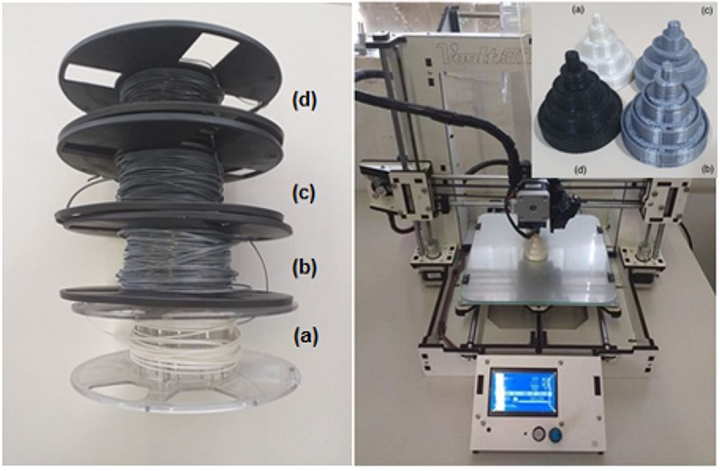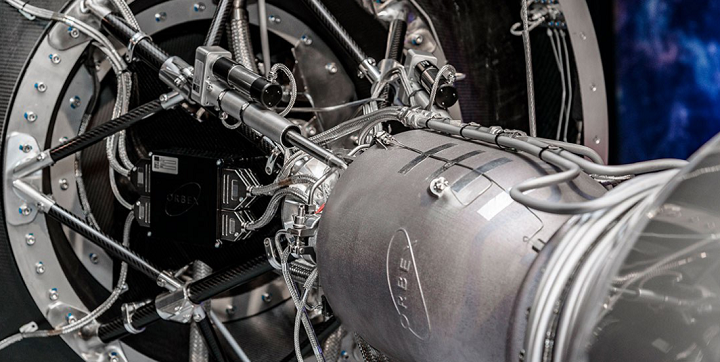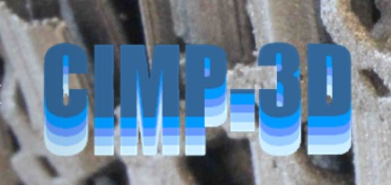In this edition of 3D Printing News Briefs, we’re starting with stories from Aleph Farms and Orbex regarding their efforts to keep our planet healthy by, respectively, working towards net zero carbon and making an environmentally friendly rocket with 3D printed parts. Moving on, Additive Assurance has partnered with Volkswagen, and Penn State’s CIMP-3D is expanding its metal AM capabilities. Finally, we’ve got some research on using expandable graphite to modify PLA for FFF 3D printing.
Aleph Farms Introduces Net Zero Carbon Roadmap
Israeli startup Aleph Farms, which grows steaks from non-genetically engineered animal cells, recently introduced its roadmap to achieve net zero carbon in its operations by 2025, and through its supply chain by 2030, thus fulfilling the vow it made last year. The startup created the roadmap with partner Aimee Christensen, a climate change and sustainability strategy expert and the CEO of Christensen Global Strategies, and explains what investments and strategic partnerships will necessary to improve its business bottom line and advance its environmental goals. As part of the roadmap, which includes transitioning renewable energy and optimizing energy efficiency, Aleph Farms signed a Memorandum of Understanding (MoU) with ENGIE‘s sustainability consulting arm ENGIE Impact to ensure that its operations are net-zero compatible, and is also partnering with CE Delft to analyze the life cycle impacts of its production line and supply chain.
“The production of food is one of the largest sources of greenhouse gas emissions on the planet today, and a driving reason why Aleph Farms is making long-term sustainability a top priority. Our roadmap represents significant research that will enable us to fulfill our commitment to total net zero within this decade and we strongly encourage other companies within the agrifood ecosystem to work to eliminate their carbon footprint as soon as possible,” said Dr. Lee Recht, VP of Sustainability at Aleph Farms.
Orbex Developing “World’s Most” Environmentally Friendly Rocket
UK spaceflight company Orbex is working to launch what it calls the most environmentally friendly space rocket in the world, the 3D printed Orbex Prime. According to a new scientific study by the University of Exeter, the carbon footprint of launching the new Orbex Prime will be up to 96% lower than fossil-fueled alternative space launch programs, and produce up to 86% less emissions, thanks to its reusable design and use of renewable, ultra-low-carbon biofuel. The study shows that the 13.8 tonnes of CO2e emissions from one launch of the Orbex Prime—including direct launch emissions, indirect emissions created by producing necessary propellant fuels, and radiative forcing (RF) effects of non-CO2 emissions at high altitude—is comparable to the annual average emissions created by a single person in the UK, and that the Orbex rocket almost completely eliminates the use of black carbon emissions. As part of its commitment to offset all emissions from the rocket and its launch operations, Orbex plans to launch Prime from Scotland’s carbon-neutral Space Hub Sutherland.
“The UK space industry has a key role to play in combating climate change, for example by launching satellites that can monitor environmental changes on Earth – but such benefits must be weighed against the environmental impact of space launches, which by their nature can be highly carbon intensive. Our study shows that the launch operation planned by Orbex can result in a significantly lower carbon footprint compared to the other launch scenarios considered in our analysis,” explained Dr. Xiaoyu Yan of the Environment and Sustainability Institute at the University of Exeter.
An Executive Summary of the study, “Orbex Holistic Launch Carbon Impact Assessment,” is available upon request.
Additive Assurance and Volkswagen’s Partnership
Moving on, Australia-based Additive Assurance, a Monash University spinout company, is partnering up with Volkswagen to develop an advanced manufacturing system for its production 3D printers, as the automobile manufacturer is actively integrating AM into its workflow and working towards serial production with the technology. Volkswagen plans to install Additive Assurance’s AMiRIS solution for quality verification at its Wolfsburg, Germany AM center, in order to “assure precise replication” of all the components it prints. AMiRIS uses cloud-based machine learning software and inspection hardware, the latter of which observes the layered build process; the software first generates a real-time defect map, then analyzes and feeds the information back to operators. With this solution, Volkswagen should be able to ensure that its 3D printed parts have consistent production quality.
“Metal Additive Manufacturing is taking the world by storm, but quality is still not at the level it needs to be for important applications. We see a huge opportunity for Additive Manufacturing and are thrilled to be working with a leading company like Volkswagen to transform how they develop their products,” stated Additive Assurance Co-Founder Marten Jurg.
Penn State’s CIMP-3D Expands Metal AM Capabilities
A lot of additive manufacturing research is conducted at Penn State, and the university’s Center for Innovative Materials Processing through Direct Digital Deposition (CIMP-3D) recently expanded its metal 3D printing capabilities by installing three new large-format AM systems. The additions of 3D Systems’ DMP Factory 500 powder bed fusion additive manufacturing (PBFAM) system, ABB Inc.‘s wire arc additive manufacturing (WAAM) system, and a cold spray metal 3D printer from SPEE3D are a great complement to the center’s excellent metal AM research, signaling more to come in the future.
The DMP Factory 500 uses multiple lasers to form solid parts out of metal powders, and includes high-speed video, an internal camera, and other custom sensors for build process monitoring, in addition to powder recycling modules. The printer was installed at CIMP-3D to support a program focused on modernizing products for the US Army. A welding arc connected to a robot allows the freestanding ABB Wire Arc Additive Manufacturing system to build large components, as it doesn’t need to manage powders or operate in a contained space. The system is paired with its larger sibling, a laser-based robotic AM printer commissioned two years ago. Finally, the new SPEE3D printer uses supersonic gas jets to propel powders at incredibly high speeds, so it sticks to parts and quickly builds new ones. The system is fast, flexible, and economic, and can be used to repair or manufacture components in the field very quickly.
Modifying PLA with Expandable Graphite for FFF Technology

Prototypes additively manufactured using FFF-type 3D printer fed with: (a) PLA-EG0%, (b) PLA-EG1%, (c) PLA-EG3% and (d) PLA-EG5%.
Finally, a team of Brazilian researchers from Universidade Federal de Ouro Preto, Centro Tecnológico do Exército, and Centro Federal de Educação Tecnológica de Minas Gerais published a paper about their work modifying polylactic acid, or PLA, filament with expandable graphite for Fused Filament Fabrication, or FFF, 3D printing purposes, and the effect of their experiments on the material’s mechanical and thermal properties. According to the researchers, FFF is the most “widespread” of the 3D printing methods, but in order to be used more for automotive and electronics applications, there’s a need for more flame-retardant filaments. The researchers added 1, 3 and 5% (wt.) of expandable graphite to commercial PLA filament, and reprocessed these composite materials into 3D printable filament, using differential scanning calorimetry and thermogravimetric analysis to determine the thermal properties. All the composites with expandable graphite achieved the V-2 rating of UL-94 flammability test, had no strong adhesion promoted between the matrix and filler in thermo-pressed specimens, but the results indicated that the PLA’s flammability was reduced.
“The possibility of printing parts with complex shapes, with the exact amount of raw material, is a great advantage of 3D printing. In this study, composite filaments based on PLA and 1, 3 and 5 wt.% of EG were developed for using in FFF-type 3D printing. The effect of EG on thermal and tensile properties of PLA was investigated. Based on the findings of these analyses, it is likely that expandable graphite needs stronger interfacial adhesion with the PLA matrix. The possibility to impart anti-flammability property to PLA filament by modifying it with expansible graphite was evaluated. All composites reached the classification V-2 in the vertical burning test (UL-94). This was not the expected result, and it’s probably due to the lack of adhesion between phases, as pointed out by the mechanical and thermal assays. The obtained composite filaments kept printable, and prototypes were successfully made from all of them. Further research should involve silane as coupling agent and also a flame co-retardant to work in synergism with expansible graphite,” the researchers concluded.
You can read the full study here.
Subscribe to Our Email Newsletter
Stay up-to-date on all the latest news from the 3D printing industry and receive information and offers from third party vendors.
You May Also Like
IperionX Inks 10-Year Deal with Wisconsin Manufacturer for 80 Metric Tons of Titanium Per Year
IperionX, the Charlotte-based supplier of sustainable titanium powders used for additive manufacturing (AM) and metal injection molding (MIM), has signed a ten-year deal with United Stars, a group of industrial...
Gastronology Launches Industrial Production of 3D Printed Food for Dysphagia Patients
Food 3D printing has, in many ways, been an additive manufacturing (AM) segment looking for the right business case. While some applications are beautiful and others may or may not...
Lockheed Martin Leads $3M Investment in Q5D’s Electronics 3D Printing System
Q5D, an original equipment manufacturer (OEM) of robotic arm, hybrid additive manufacturing (AM) systems used for wire harness production, has closed a $3 million investment round. The investment arm of...
3D Printing News Briefs, April 6, 2024: Depowdering, Cybertruck Door Handles, & More
In today’s 3D Printing News Briefs, ioTech’s digital manufacturing CLAD technology is opening up opportunities for microelectronics and additive manufacturing. Hexagon and Raytheon Technologies commercially released the Simufact Additive Process...



































